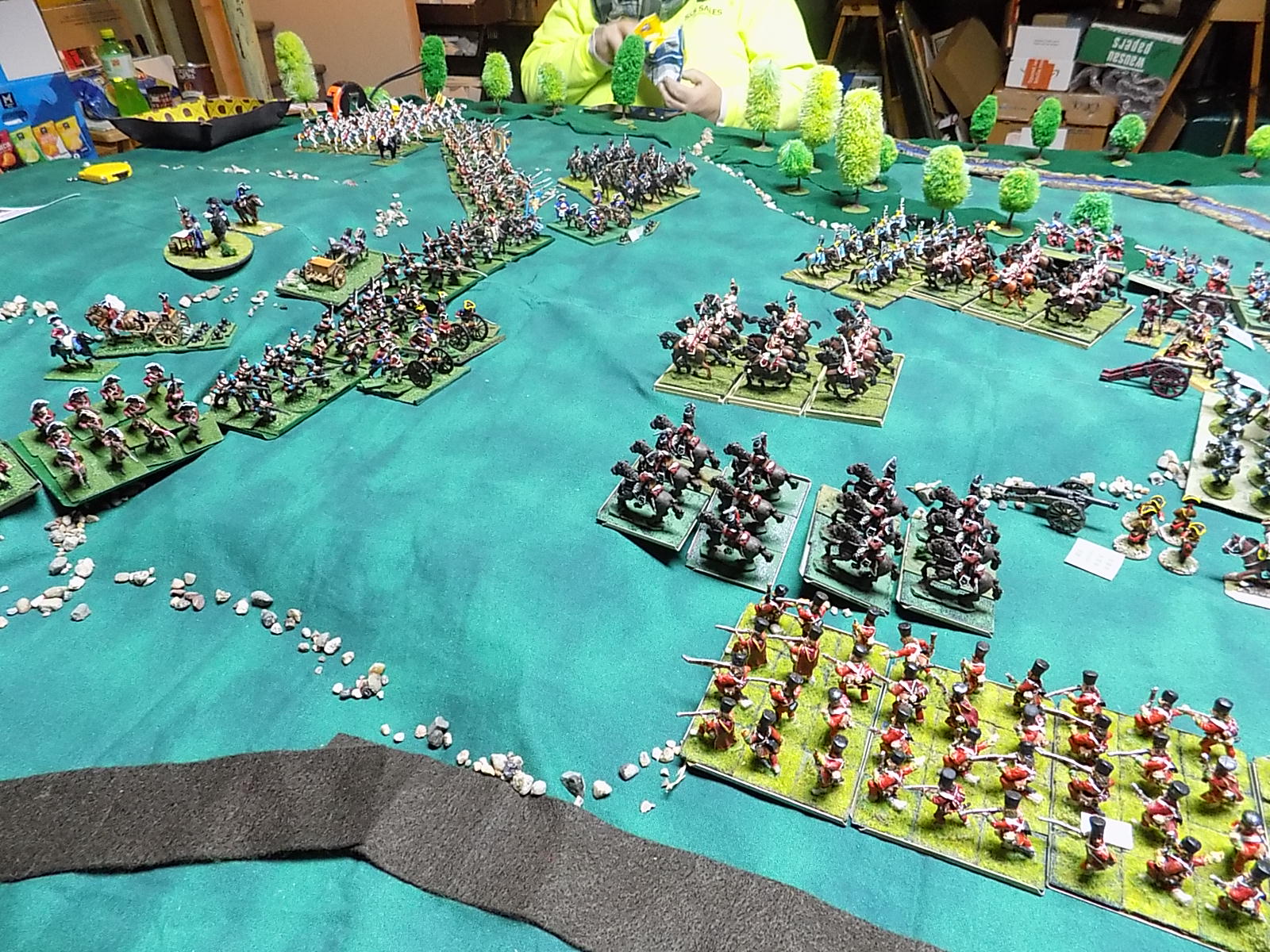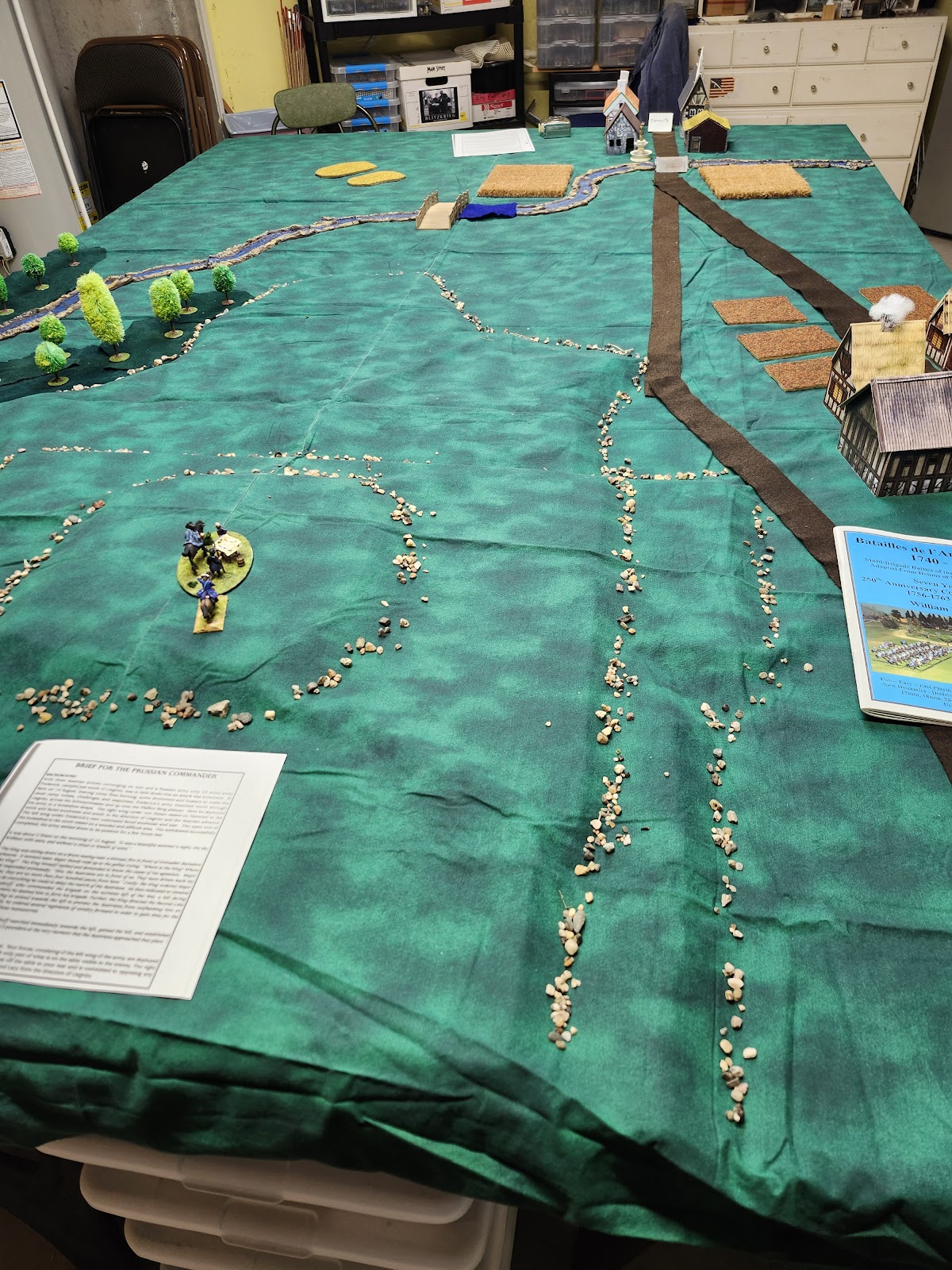In 1760 Frederick the Great was being pressured by the forces of Daun and Louden. Expecting to be attacked at any time, he chose to make his stand near the town of Liegnitz. The Austrians planned a three pronged attack against him. This is Frederick's right flank.
Rules are Batailles de l'Ancien Regime (BAR) by Bill Protz. A card driven game for movement and firing, with copious hits administered, sometimes negated by saving throws. The table is 6x9' with terrain having little impact on movement. The majority of our units are from our Imagi-Nation armies, so bear little resemblance to their historic counterparts. Only one Prussian and one Austrian brigade were in the proper uniform. On to the report. Lots of pictures with minimal text. Click to enlarge pictures.
From the three level Prussian position looking towards the anticipated Austrian arrival.
The Austrian arrival points for the 2nd and 3rd columns, looking towards their goal.
The book inspiring the scenario that I picked up through Military Matters.
At 2:45am the battlefield is shrouded in darkness.
We only put out the Prussian first line with the limited visibility, which varied each turn,
The Austrian Advance Guard, all grenadiers, were sighted at this point.
The players wanted lights out, but even without a dedicated flash, it was still lit up.

By Turn 3 the two advancing Austrian columns lumbered into view of all. Their cavalry boldly advanced in the face of a heavy "Brummer" and two field pieces.
After the smoke cleared, 12 cavalry were down.
The Austrian grenadiers have suffered, with little given back, but the others approach.
A grand view of roughly 1000 miniatures in true Old School fashion.
The Prussians are feeling the weight of being heavily outnumbered, with both flanks in danger.
On the Prussian left, after a failed charge by Dragoons, they send their cuirassiers against the disordered infantry.
With predictable results. Vorwarts! Nein, wir können nicht weitermachen. Komm zurück!
The success was short-lived and row after row of Austrians advance, bands playing and colors flying.
Things are no better on the Prussian right, Austrian left, despite momentarily pushing the Austrians back though the village of Patten.
The cuirassiers have found a place to safely reform, but the lines are getting thin.
A shattered Prussian battalion is faced with yet another fresh foe.
And just like that, the Prussian center is gone. Still out-numbered 2:1, Frederick has no choice but to retire from the field with the remnants, covered by the resurgent cuirassiers.
One last look, from the triumphant Austrian viewpoint.
Historically, the battle went very differently. Of the roughly 18,000 Austrians engaged, 8,000 were wounded or killed and 3,000 taken prisoner. Prussian losses were also heavy, but it was still a decisive engagement. In our game the saving throws were as bad for the Prussians as they were good for the Austrians. And it seemed that the majority of first firing attempts went the Austrian way too. But, as they say, that's why we use dice!
Six players, a little over three hours of actual play (not counting set-up and planning), and six turns completed. Quite acceptable considering how out of practice we are. Next time we'll do better!
























































































